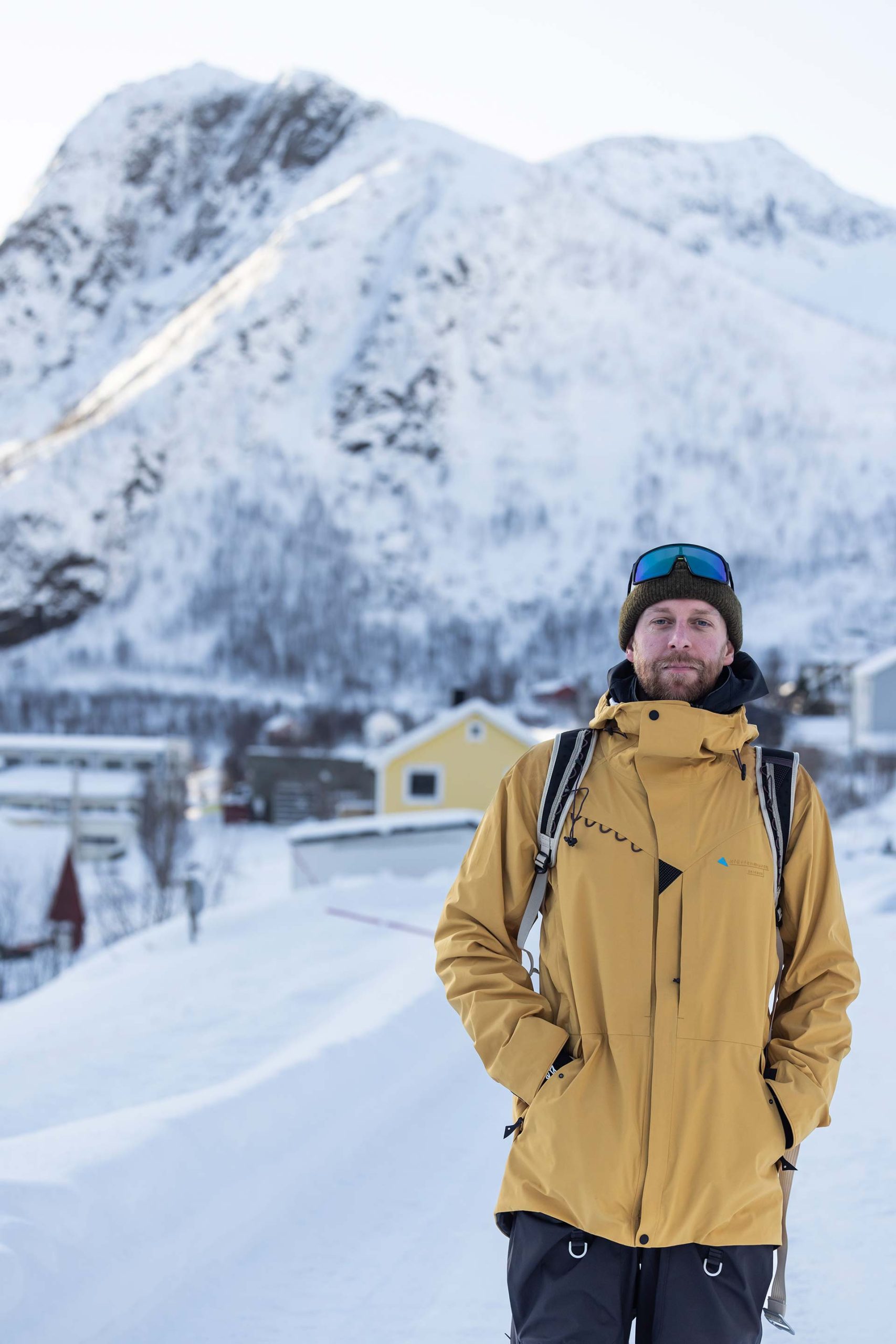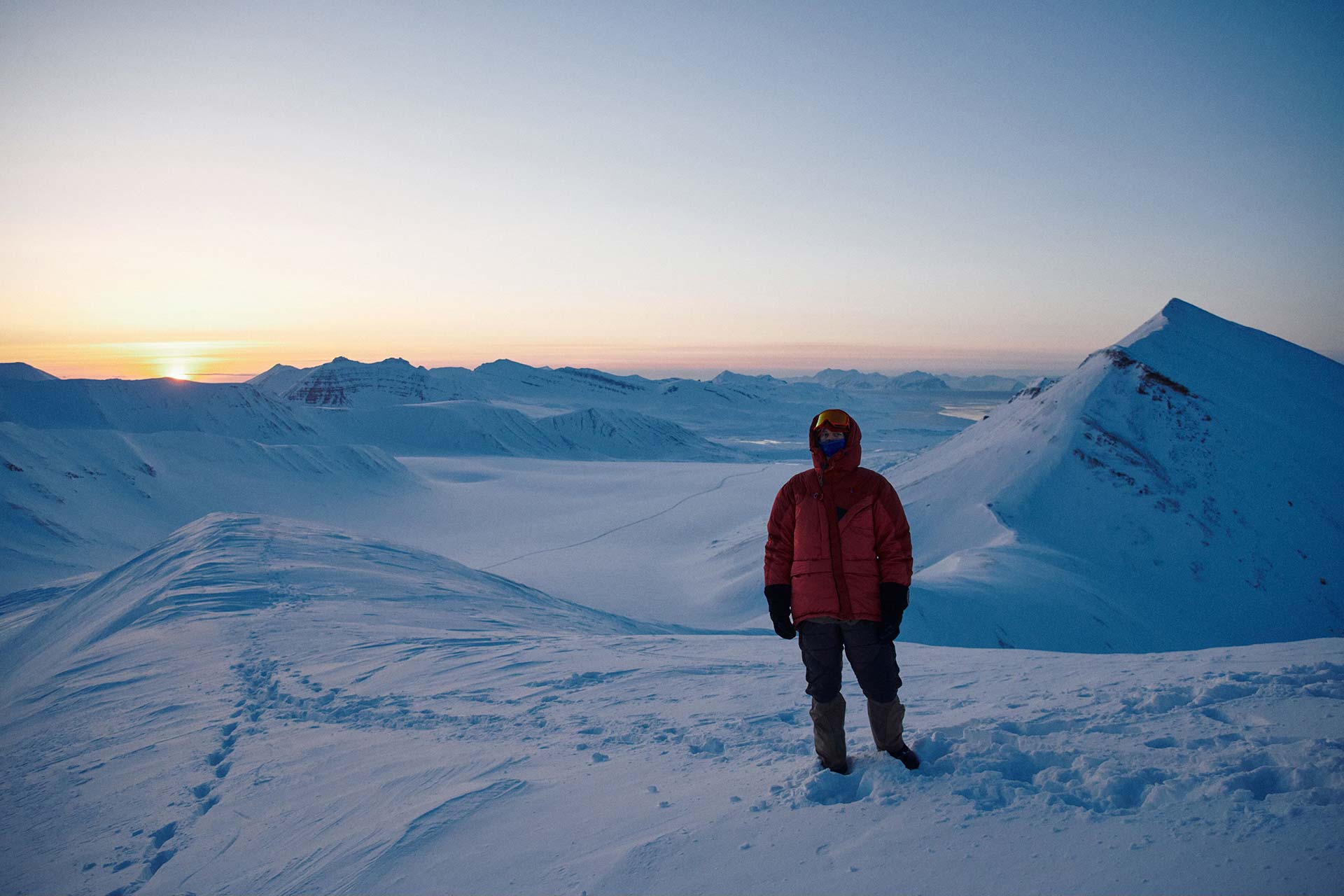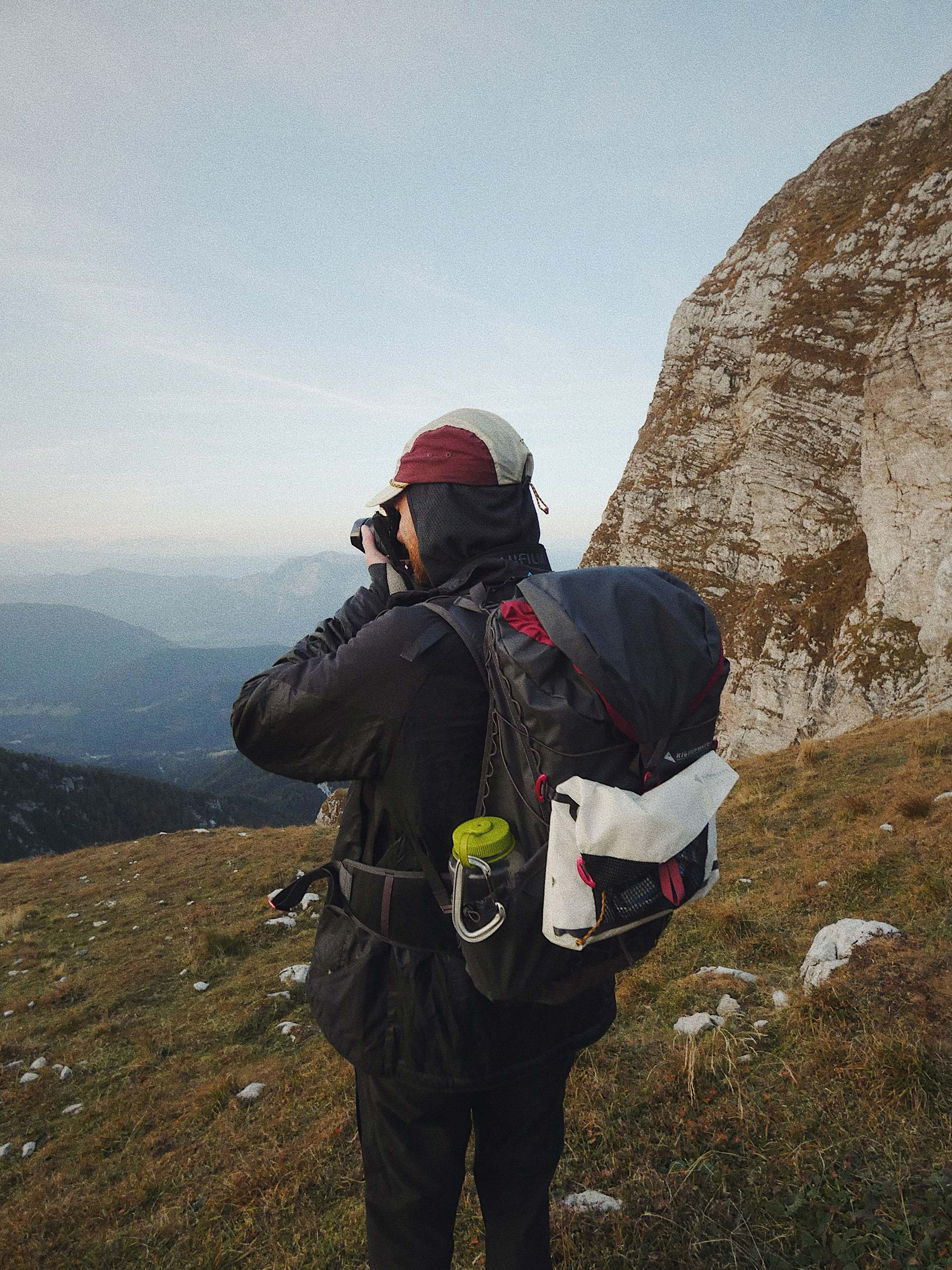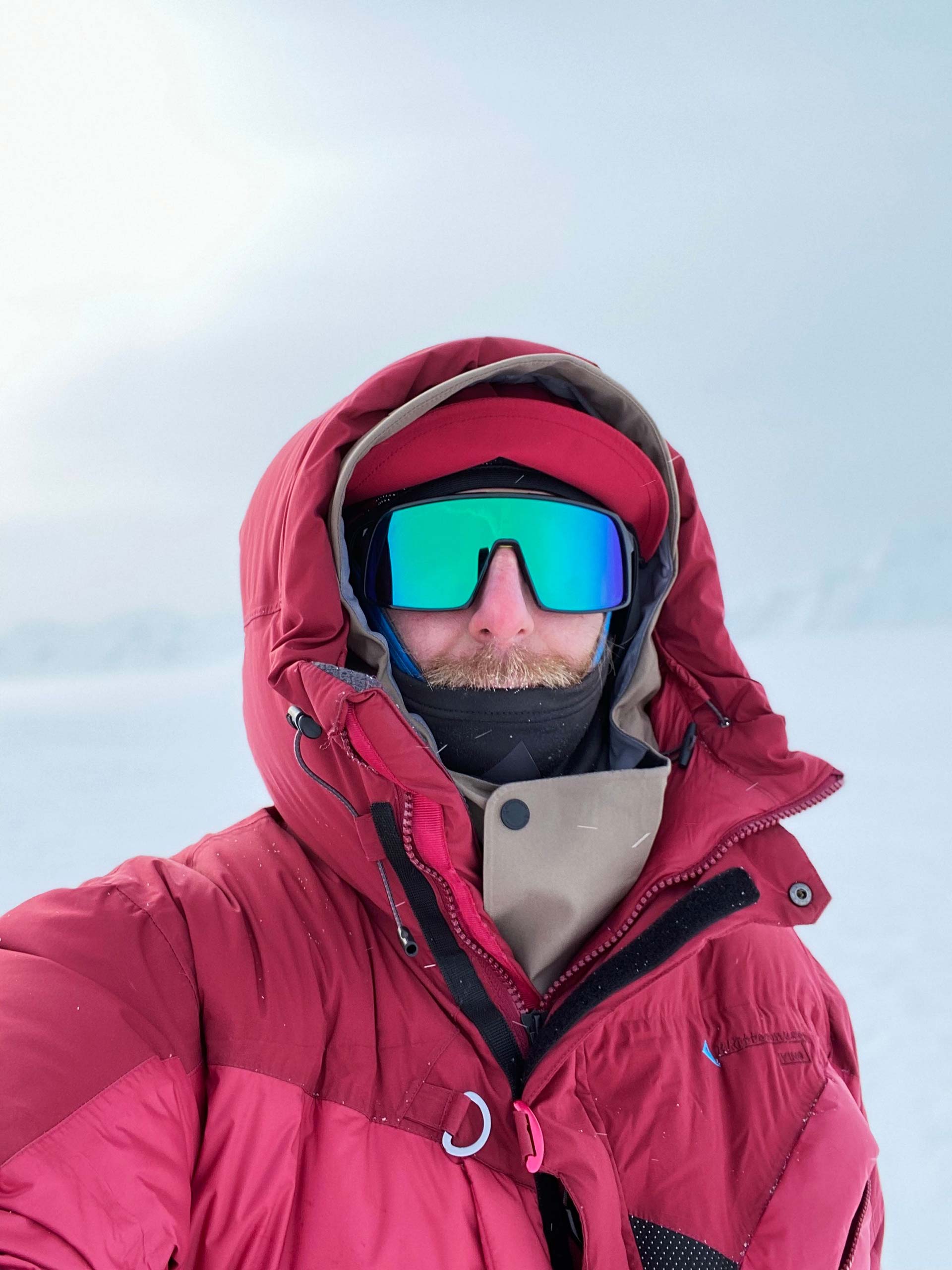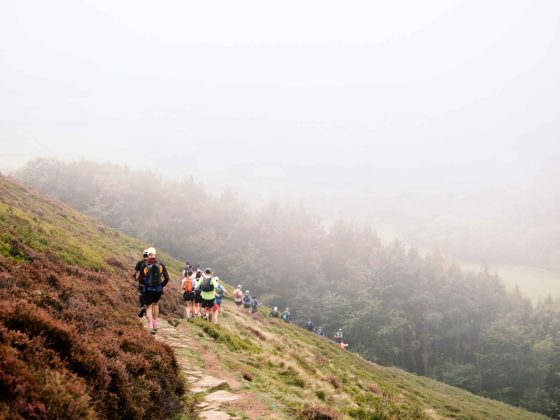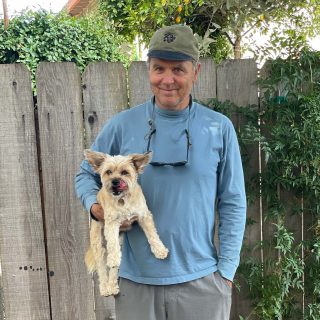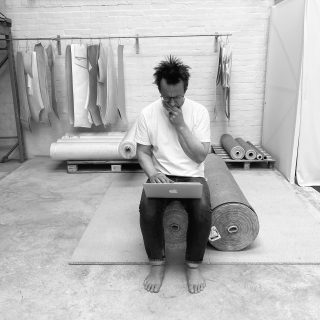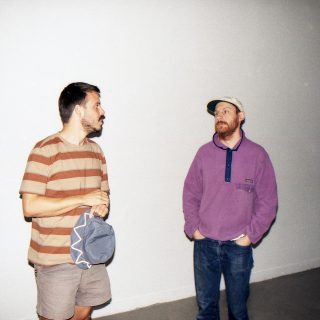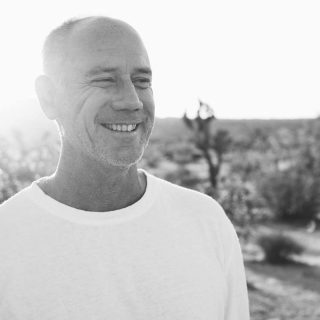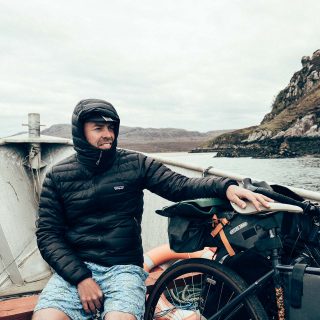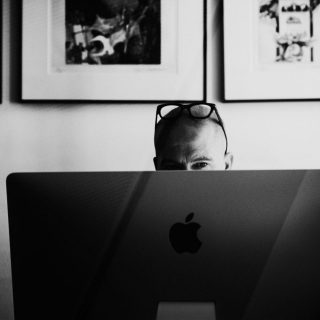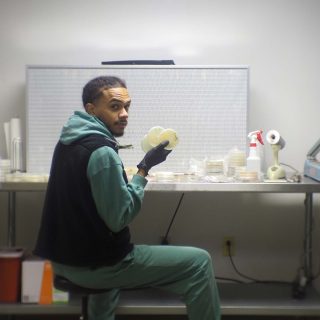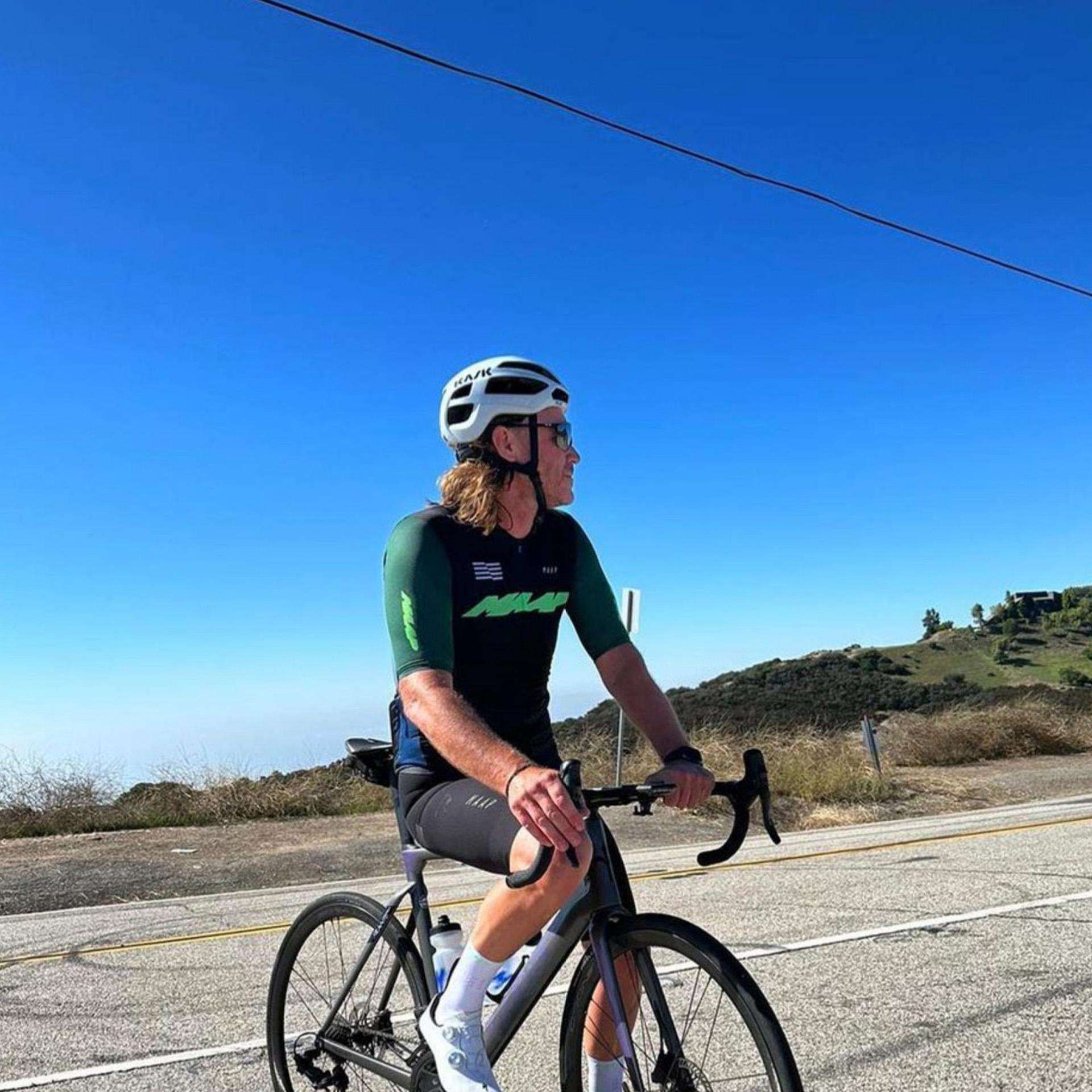An Interview with Simon Stenborg from Klättermusen
A big ol’ chat with the pioneering outdoor brand’s Creative Lead
Swedish outdoor brand Klättermusen have always done things a little differently. From developing their own waterproof fabrics to their dedication to the diagonal zip, they’ve long gone against the grain in their quest for functional, purpose-built gear.
As the brand’s Creative Lead, it’s Simon Stenborg’s job to tell the stories behind it all—to capture the innovation that goes into each piece and translate that to the people who’ll be wearing it.
We called up his studio in Stockholm to chat about the early days of the brand, the beauty of being the underdog and the outdoor-wear of the future…
First of all, how would you sum up Klättermusen? For those unaware, what’s the history behind it?
It started out in the 70s—we generally date it back to 1975, as that’s when the idea of the brand started, but it wasn’t maybe an official company until a little later. They had a workshop at that time where they tried to redefine certain products—maybe taking items which weren’t suitable for the Scandinavian landscape, and modifying them—trying to find solutions. They were especially interested in finding new materials and different combinations of materials.
“We’re different, but not just for the sake of being different—everything we do has a purpose.”
What I think is interesting about the founders was that Peter was a chemist—and that’s why they had this knowledge of certain chemicals. They grew up around that green wave thing—so right from the beginning they were trying to find better ways to make outdoor clothing. Back then, outdoor brands weren’t really that concerned about how they produced their clothing, so that’s what’s really cool about Klättermusen—that sustainability mindset was there from before it was even a company.
What sort of stuff was the brand making back then? What did the clothes look like?
At that time they were using a lot of organic materials—wool and cotton—but what they were trying to do was find new fabric combinations that other brands hadn’t thought of. They were also putting a lot of thought into how their gear was produced. The first Klättermusen product was actually a pair of gaiters—a lot of what they were trying to do back then was making sure things were really durable for the Scandinavian landscapes. Even back then, the innovation spirit was strong.
I suppose the Scandinavian landscape is very different from England or California. The outdoor brands from here or California would have to think of very different situations to what Peter and his friends were designing for.
Exactly. Our mountains aren’t really super high or steep—they’re more mellow, but the tree line goes high, and you need to do a much longer trek to get to where you’re going. So it’s not just about climbing up a wall, but you have to get there—and that could take two or three days.
Subscribe to our newsletter
That trekking thing seems like a particularly Scandinavian take on the outdoors—with whole families going off cross-country skiing for a week. That doesn’t really happen in England.
Definitely. You get to do a lot of horizontal walking or skiing in Scandinavia. Back in the 70s the mountaineers would be out for at least a week—and it’d take them a couple of days to get there—and then they’d need to set up camp. You definitely take longer journeys than in other countries where you’d maybe go to a place, walk for a few hours and then you’d be at the climbing spot. The horizontal journey has always been a big part of the Scandinavian outdoors.
How does that affect the clothing?
I’d say that if you’re out for longer periods of time, the safety aspect and durability is especially needed. If you’re moving slowly, you can use slightly heavier gear—and by that I mean more durable and rugged. If you’re out for seven days and your stuff breaks, it’s basically a lethal situation. If you want to move fast and just go for day hikes, you can get away with lighter gear, but the classic Scandinavian outdoor clothing is usually slightly heavier and more durable—with more safety details—like if you’re zipper breaks there has to be a way to close your jacket in a snowstorm. I think those aspects are what have defined Scandinavian outdoor gear since the early days.
I suppose it’s like the difference between an F1 car and a Volvo.
Exactly. It’s about what you want to achieve, and where you want to go. We try to cover both angles—both the endurance and the fast paced clothing—for the horizontal and the vertical.
Where did the diagonal zip come from? That seems like such a unique thing for Klättermusen?
It’s been around for quite some time. It’s funny—it’s actually a very basic, easy solution to a lot of problems. If you want to layer up—and you have different layers with zippers, you don’t want them all next to each other, and you don’t want them to chafe against your chin and throat. But if they’re slanted, you get them out of the way. So it’s not about doing a wonky design to be different, it actually serves a purpose. It means all your zippers don’t bundle up next to each other. It also shifts the way the rain goes—and there are a lot of intricate details within the zipper design to help get water out the way—it becomes more engineering rather than design.
That’s a good example of how you look for different answers to problems—Klättermusen has always seemed to have gone its own way.
Definitely—we’re different, but not just for the sake of being different—everything we do has a purpose. That could be an easy thing like having your jacket pockets slightly higher up so your harness doesn’t get in the way, or it could be a small and simple solution to a big problem, which in certain cases, people just haven’t thought of before.
On the outside, I assume that people don’t see what’s really there—because things often look very classic and sleek and minimal—but I see it like when you pop the hood of a car that might not look that fast, but the under the hood it’s like, “Okay, I get it—that’s where it is.” Whilst other brands might want to design stuff that looks more technical—just for the feel of it—I think Klättermusen has always been ‘under-the-hood’ design wise. It’s not spectacular on the outside, but it’s what’s in the design that matters.
Some of your approaches remind me of how outdoor brands used to operate back in the 70s and 80s—back when each brand had its own unique style and flavour. I’m not saying your stuff looks retro—but it still has that interesting feel to it—it still feels like it’s made by people who like messing around in the outdoors.
The brand has always been about innovation and finding new solutions. And sometimes you don’t have to reinvent stuff to make a completely new product—a lot of the jackets we have today are based on jackets we made maybe 10 or 15 years ago. We might have modified them or made certain improvements, but the groundwork has been so good from the start you can use that design and either adapt it to different situations, or maybe find a better way to produce the materials.
It took us a very long time to make our first back-country skiing jacket, because if we want to do something, we need to do the best version of it. We can’t just throw a label on something—because then we wouldn’t have done our job. If we’re not experts in the field, making the best possible product, we’re not going to release it.
We’re not in the business to do fast solutions—I usually see it as when we release a new product, even though it’s been on the drawing table for maybe two years, it’s actually taken 45 years to make, because we use all the previous knowledge—the trial and error, the mistakes and the successes. So a Klättermusen jacket will always have a solid development of at least 45 years in that sense.
A lot of the fabrics you use are unique to Klättermusen, aren’t they? Why do you go down that route instead of just using off-the-peg fabrics?
Some of those waterproof fabrics are amazing—but unfortunately the manufacturing of them still isn’t PFA-free—so we use our own proprietary membrane and coating which we called Cutan, which is equally waterproof and equally breathable, or even better.
It would be easier just to buy a material which you know has been proven and tested and everyone loves—you could put that logo on your jacket and everyone would recognise it and know that it’s good—but for us, to actually develop a new technology and a new solution is what Klättermusen is about.
“You have people who collect old jazz seven-inches, who go all around the world digging in basements to find that one record, and that’s the sort of nerdery that goes into a Klättermusen design.”
There are so many different materials that we use that are really unique in that sense. I love a technology and material that we have called Katla Cotton. It’s actually 100% organic cotton that we’ve managed to make windproof by applying an enormous amount of pressure and heat to the fibres which makes them get very dense, which naturally makes it windproof, and at the same time very breathable.
When a lot of brands use organic materials, they do it in more of a retro, old school way—just to have it in their heritage line—but for us, it’s about redefining new technologies and new solutions.
As ‘Creative Lead’, is it almost your job to translate these products and technologies to the customer and explain what it means to them?
Exactly. Within the brand job it’s our job to translate all this engineering stuff—not into layman’s terms exactly, because that’s just making it easy on yourself and not trusting your audience to understand— but I think what we’re trying to do with the brand is to celebrate that nerdiness and the hard work that goes into it.
You have people who collect old jazz seven-inches, who go all around the world digging in basements to find that one record, and that’s the sort of nerdery that goes into a Klättermusen design. It’s a passion to make the best stuff out there—and that’s what we’re trying to show—we take our mission and our products and the activities that we make stuff for—we take that so seriously, that us as a brand doesn’t have to take itself seriously.
I suppose the name showed that from the outset.
It’s sort of a silly name. It’s from an old children’s story—a Norwegian one actually. There’s this character—Klas Klättermus—he’s this little mischievous fellow who’s always out on adventures, he’s a bit cheeky, but also a lot of fun.
As serious as we are with our product and our goals, we’re just human beings trying to make stuff. We do serious stuff, but you’re supposed to be able to have fun—why would you be in the outdoors if you hated it—if everything was just painful and harsh? If you love something, you’re supposed to enjoy it.
Yeah—we’re only playing around with friends, having a good time camping or climbing or whatever—it’s not some military operation we’re being forced to do.
Exactly—the situations that you put yourself in might be very serious or dangerous, but no one is putting a gun to your head. The whole foundation of it is something enjoyable and fun, so we try to balance that seriousness and safety aspect with the actual basics of why we do what we do… and that’s to enjoy ourselves.
Don’t take this the wrong way, but you’re a bit of an underdog when it comes to outdoor brands. Does that give you a bit more flexibility to take risks and do interesting stuff?
Definitely. We’re allowed to be ourselves, and I think being yourself is the best way of showing confidence in what you do. You’re right—we are a bit of an underdog—we’ve always been ‘your favourite brand’s favourite brand’ rather than something mainstream to the general public. And it’s not that we don’t want to get bigger, it’s just that we want to do it our way—keeping it Klättermusen.
You made that ski-ballet video. That’s pretty left-field. It’s not the usual intense, black and white, ‘man and nature’ thing outdoor brands usually put out.
And that’s part of us being the under-dog. We feel like we’re more on the side of those kinds of people—ski ballet is maybe a bit silly, but I love the whole thing about it. People are daring to be who they are and doing something differently—people pulled the plug on the whole culture and sport, and it just sort of died out, and after that it’s been more of a thing that people maybe see on the internet and maybe ridicule or look down on it, but I feel like, “Do you know what? I love it—I love those people.”
And they’re still out there doing it. I like how when the limelight leaves a subculture, there’s always a few committed folks still keeping the fire burning.
Yeah—even though they’re slightly older now, hopefully somebody will see the video and think, “I want to do that—that looks fun.” It’s about being who you are and just expressing yourself how you want, even if it’s not the coolest thing around, and it maybe never was—but just to bring something else out into the spotlight is really important to us, to show people aspects of the outdoors they’ve maybe never seen or understood before.
Over the last few years with people looking more at technical clothing—more people have discovered Klättermusen. Is it hard not to get distracted by a new audience?
We definitely don’t ignore it, but that attention is not something that we strive for or work towards. Groups or subcultures have always found brands and made them into their expression or language—from the North Face in the 90s with the New York hip hop scene or Stone Island with football fans.
The outdoor and technical gear is very in style right now—which first of all I think isn’t a bad thing—it’s cool that people have actually started to dig a bit deeper into the things that they are wearing, and they’re getting interested in materials and how things are produced. But no, it’s fairly easy for us, because we know who we are, so we’re quite confident. And we’re not excluding anyone—if you just want to use our stuff to look cool, then you’re allowed to. That’s not what we made it for, and we’d love to see you make use of it—but we’re not trying to be anything that we’re not.
Of course we’re aware of our surroundings, but I feel that if you go too far down that route, if you change your path towards that kind of scene, it’s only a short term thing. If people come in from more of a fashion approach now, then when this craze goes down a bit, hopefully they will have found the real outdoors in that time and will still be interested in it—and then we’re there with open arms, like, “Hey, we can show you some more stuff.”
And maybe you guys are appealing now because you’re not trying to be everything to everyone—it’s this interesting, different brand that feels new. That’s exciting for people.
Yeah, that can be appealing for people who are looking for something that’s slightly original and feels like it has a certain identity or humanness about it. But what I hope people would find interesting about us is this sense of exploration and discovery—this sense of searching for new solutions and new paths.
When it comes to the whole talk today in 2024 about sustainability and all of that—we haven’t really talked about it that much as a brand, because we feel that it’s been such a big part of the company for so long that maybe we forget to talk about it. We’re really honest with ourselves, and sustainability today—the word itself—has maybe lost a little of its original meaning. To be sustainable as a company… you can’t! As long as you create new things, then that’s not really sustainable.
We know that we’ve done a better job than most people for 45 years, but have we done enough? That’s the question. We can only do so much, and I think that’s the core essence of Klättermusen, always aspiring to do better.
Good answer there. Rounding things off, where do you see outdoor clothing in 20 years? How will things change?
That’s a very difficult question to answer, because there are so many aspects to take into consideration. But at least my hope is that brands will be more purpose-driven and do something for a reason, rather than just because they feel like they need to stay relevant or make a lot of money.
I think the whole industry will shift because of the rising popularity of the outdoors—it’s getting more and more accessible, and it’s getting more and more easy to take part in—and I think that will lead to more purpose-driven design. Do you really need ten jackets? Do you really need a new jacket every year because there’s a new colour? This goes against the commercial side of things, but if you buy a quality jacket, it should last for 10 or 15 years, and if it breaks, you should be able to repair it.
You can almost see the future by going back into the past. If you look at the 30s, 40s and 50s, especially with the working class and the middle class—they had quality garments and they’d go to a tailor.
Today that seems like luxury, but back then, that was the only way to get pieces of clothing most of the time. You had a coat for 20 years that you used for everything—and I think that mentality might come back—to actually be able to buy something that might seem expensive, but if it can help you for the next ten years. Hopefully that’s where we’re heading to—people buying less, but buying better stuff instead of changing it every season. I think the outdoor industry will hopefully respond to this. Everyone has to make money, but they might adapt to that mentality.
Find out more about Klättermusen here.
Interview by Sam Waller.
